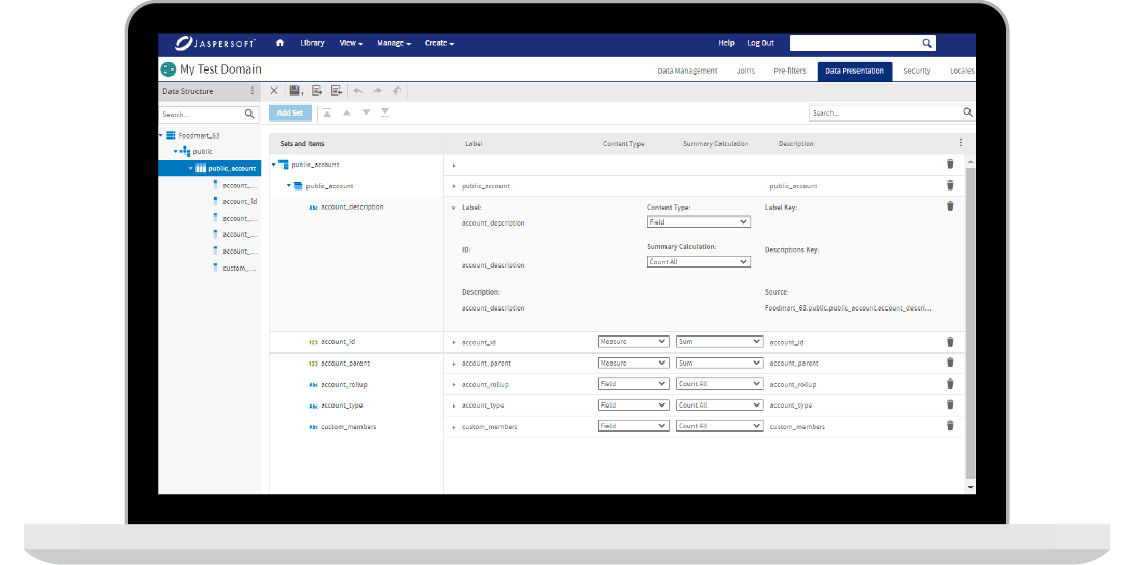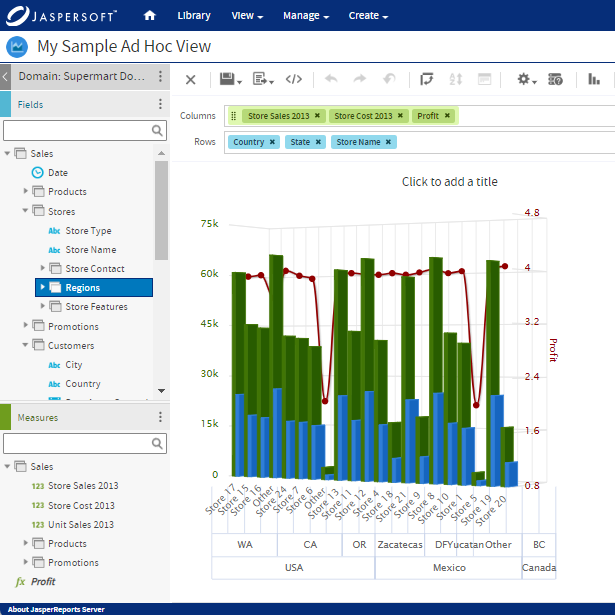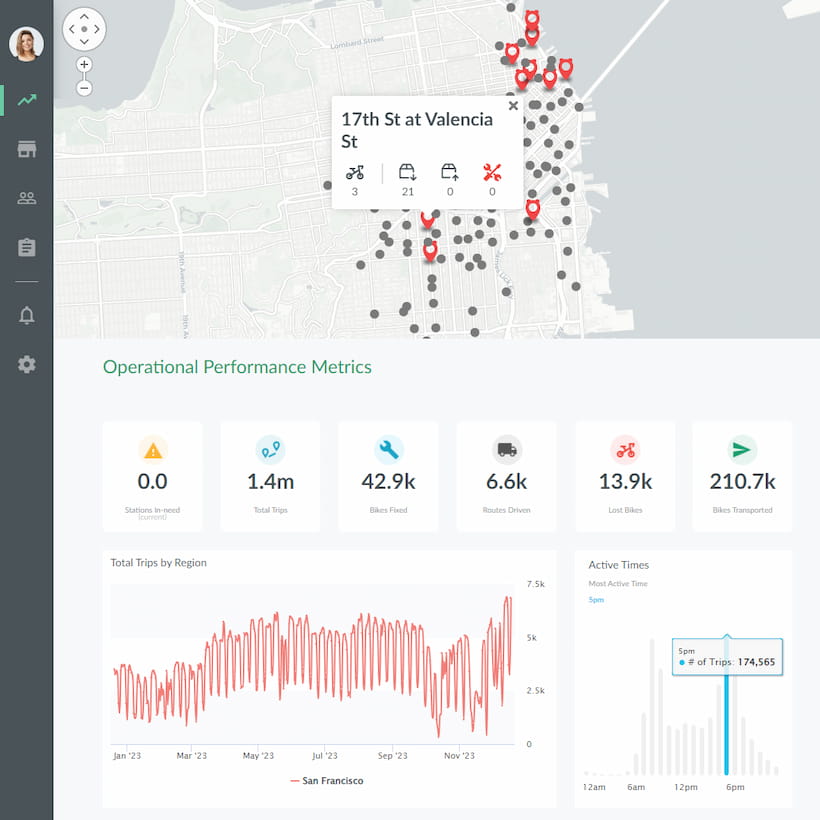What is Self-Service Data Preparation?
Self-service data preparation is a process that enables users to access, explore, transform, and analyze data without relying on IT or data experts. It empowers business users to prepare data for various purposes, such as reporting, analytics, or machine learning, using intuitive tools and interfaces.
Businesses can gain insights from data faster through self-service data preparation. It can reduce the workload of IT or data professionals and improve the quality and reliability of data. It reduces the time and cost of data preparation by allowing users to perform data cleansing, integration, enrichment, and transformation tasks on their own.

Purpose of Self-Service Data Preparation
Self-service data preparation emerges as a dynamic force, putting the power of data manipulation into the hands of business users and analysts. Gone are the days of relying solely on IT departments for data cleansing and transformation; self-service data preparation is ushering in a new era where individuals can shape and mold their data to extract meaningful insights. Let's embark on a journey to unravel the purpose, scope, format, and best practices of this transformative approach.
At its core, the purpose of self-service data preparation is to democratize data. It aims to break down the barriers that traditionally limited data manipulation to a select few with technical expertise. Now, business users and analysts can actively engage in the data preparation process without the need for intricate coding skills. The democratization of data empowers individuals across various departments to become data-savvy, fostering a culture where decision-makers are not just consumers but contributors to the data lifecycle.
This newfound autonomy allows users to shape data to their specific needs, creating a more agile and responsive analytical environment. Whether it's cleaning messy datasets, merging disparate sources, or transforming data into actionable formats, self-service data preparation puts the tools directly into the hands of those who understand the business context, resulting in more accurate and relevant insights.
Navigating the Scope: Beyond Traditional Boundaries
The scope of self-service data preparation transcends the boundaries of traditional data management. Unlike its predecessor, where data preparation was confined to IT specialists, the self-service paradigm opens the door for a broader audience. From marketing professionals to financial analysts, individuals with domain expertise can actively participate in the preparation of their data. This expanded scope not only accelerates the data preparation process but also ensures that insights are derived from a more nuanced understanding of the data's context.
Moreover, the scope extends beyond the organizational borders. With cloud-based self-service data preparation tools, users can harness the power of data wherever they are. The flexibility to prepare data on the go, collaborate in real-time, and share insights seamlessly broadens the impact of self-service data preparation. It transforms data preparation from a siloed activity into a collaborative and interconnected process, fostering a culture of shared insights and collective data ownership.
Crafting the Format: The Visual Aspect of Data Transformation
In the realm of self-service data preparation, the format is the canvas upon which data transformation unfolds. The tools provided are akin to brushes, allowing users to craft and mold data with precision and creativity. The format encompasses a range of activities, from cleansing and shaping to enriching and blending data. Users can effortlessly navigate through interfaces that offer a visual representation of their datasets, making the transformation process intuitive and accessible.
The visual aspect of self-service data preparation is not merely aesthetic; it's a strategic design choice. By presenting data in a visual format, users can instantly grasp the impact of their transformations, identify patterns, and spot anomalies. This visual feedback loop not only enhances the user experience but also accelerates the learning curve for those venturing into the world of data preparation.

Best Practices: Navigating the Waters of Self-Service Data Preparation
Self-service data preparation demands adherence to best practices that ensure a smooth and effective process. These best practices form a navigational guide, steering users away from potential pitfalls and towards a destination of meaningful insights.
1. Embracing Data Governance: A Cornerstone of Best Practices
Data governance takes center stage as a cornerstone best practice in self-service data preparation. Establishing robust governance frameworks ensures that data remains accurate, consistent, and compliant with regulatory requirements. By implementing access controls, defining data quality standards, and monitoring data usage, organizations can strike a balance between autonomy and control, mitigating the risks associated with data manipulation.
Data governance is not a hindrance to self-service; rather, it is an enabler. It provides the guardrails that allow users to explore and manipulate data confidently, knowing that the integrity of the data is preserved. Embracing data governance in self-service data preparation is akin to navigating uncharted waters with a reliable compass – it ensures that users stay on course while unlocking the full potential of their data.
2. Fostering Collaboration: Breaking Down Silos
Collaboration stands as a beacon of best practice in the realm of self-service data preparation. Gone are the days of isolated data manipulation; the power of collaboration lies in bringing diverse perspectives to the data preparation process. By fostering a culture where business users, analysts, and IT professionals collaborate seamlessly, organizations can harness the collective intelligence of their teams.
Collaboration extends beyond the organization's walls. With real-time collaboration features in self-service data preparation tools, teams can work together irrespective of geographical constraints. This interconnectedness not only accelerates the data preparation process but also ensures that insights are derived from a wealth of collective knowledge. The silos that once confined data preparation to isolated departments are dismantled, giving rise to a culture where insights are a shared endeavor.
3. Ensuring Data Quality: A Non-Negotiable Best Practice
In the realm of self-service data preparation, ensuring data quality stands as a non-negotiable best practice. The democratization of data should not compromise the accuracy and reliability of insights. Organizations must establish data quality standards and empower users with tools to assess and enhance the quality of their datasets. The best practice of ensuring data quality involves proactive measures such as data profiling, anomaly detection, and automated data cleansing. By embedding these capabilities within self-service data preparation tools, organizations can empower users to identify and rectify data issues in real-time. This not only streamlines the data preparation process but also ensures that the insights derived are built on a foundation of trustworthy data.
The Benefits and Challenges of Self-Service Data Preparation
In the dynamic landscape of data analytics, self-service data preparation emerges as a powerful tool, offering a myriad of benefits for businesses. Let's delve into the advantages that propel organizations towards a future where data is not just a resource, but a dynamic asset shaped by those who understand it best.
1. Empowering Business Users: Unleashing the Potential
Self-service data preparation transforms data manipulation from a technical chore to an accessible endeavor for business users. With intuitive interfaces and user-friendly tools, individuals across various departments can actively engage in preparing and shaping their data. This empowerment not only accelerates the data preparation process but also ensures that those with the deepest understanding of the business context are the ones shaping the insights.
The beauty of empowering business users lies in the agility it introduces. No longer bound by the constraints of waiting for IT specialists, teams can instantly respond to changing business needs. Whether it's creating ad-hoc reports, exploring new datasets, or refining existing analyses, the power to shape data is distributed across the organization. This democratization of data ensures that insights are not siloed but are a collective effort, fostering a culture where data is a shared language spoken by everyone.
2. Accelerating Time-to-Insight: From Raw Data to Actionable Intelligence
Time is of the essence in the fast-paced world of business, and self-service data preparation acts as a catalyst in reducing the time-to-insight. Traditionally, waiting for IT departments to prepare and deliver data could be a time-consuming process, slowing down decision-making and hindering the responsiveness of organizations. With self-service tools, users can transform raw data into actionable intelligence swiftly.
The acceleration of time-to-insight is achieved through streamlined processes. Business users can independently access, clean, and transform data, eliminating the bottleneck of dependence on specialized skills. This not only speeds up the analytical cycle but also ensures that decision-makers are working with the most current and relevant data. The result is a more agile and responsive organization, equipped to make informed decisions swiftly in a rapidly changing business landscape.
3. Facilitating Data Exploration: A Journey of Discovery
One of the significant benefits of self-service data preparation is the facilitation of data exploration. Users are not confined to pre-defined reports or limited views of data; instead, they can actively explore and discover insights on their terms. This freedom to navigate through datasets fosters a culture of curiosity and discovery within organizations.
Data exploration is not solely about finding answers; it's also about asking the right questions. Self-service data preparation encourages users to delve deeper into their data, uncovering patterns, trends, and outliers that may have gone unnoticed. This iterative process of exploration contributes to a more nuanced understanding of business dynamics and opens avenues for innovation. In the world of data analytics, the journey of data exploration is as valuable as the destination.

Challenges on the Horizon: Navigating the Data Landscape
While the benefits of self-service data preparation are substantial, it's essential to acknowledge the challenges that organizations may encounter on their journey. Navigating the data landscape, especially when empowering a diverse range of users, brings forth certain hurdles that demand careful consideration and strategic planning.
1. Ensuring Data Quality: The Foundation of Reliable Insights
One of the foremost challenges in self-service data preparation is ensuring data quality. Empowering business users to manipulate data requires a robust foundation of trustworthy information. Without proper governance and data quality standards, there's a risk of inconsistencies, errors, and inaccuracies seeping into analyses.
Organizations must establish clear data quality guidelines and implement mechanisms for users to assess and enhance the quality of their datasets. Automated data profiling, anomaly detection, and validation checks become crucial tools in maintaining the integrity of the data. While self-service brings autonomy, it also necessitates a heightened focus on ensuring that the insights derived are built on a foundation of reliable and accurate data.
2. Security Concerns: Safeguarding Sensitive Information
As organizations open the doors to self-service data preparation, security concerns loom on the horizon. Granting individuals across departments the ability to access and manipulate data raises questions about safeguarding sensitive information. Unauthorized access, unintentional data exposure, or mishandling of confidential data become potential risks.
Implementing robust security measures is paramount. Role-based access controls, encryption protocols, and user authentication mechanisms must be in place to mitigate the risks associated with data security. Educating users on best practices and fostering a culture of data security awareness are equally crucial aspects of addressing security concerns in the realm of self-service data preparation.
3. Managing Complexity: Balancing Autonomy and Control
While self-service data preparation empowers users, it also introduces a layer of complexity. Balancing the autonomy granted to business users with the need for governance and control becomes a delicate dance. Without proper management, there's a risk of creating data silos, where disparate teams may manipulate data independently, leading to inconsistencies and a lack of standardization.
Organizations must strike a balance by implementing centralized governance frameworks. This involves defining clear data stewardship roles, establishing data preparation standards, and monitoring the activities of users to ensure adherence to guidelines. The goal is to maintain a harmonious balance where users have the autonomy to shape their data, but within the boundaries set by organizational standards.
4. Sailing Towards a Data-Driven Future
In the vast sea of data, self-service data preparation serves as a navigational compass, guiding organizations towards a data-driven future. The benefits of empowering business users with the ability to shape their insights are undeniable. From accelerated time-to-insight to fostering a culture of data exploration, the advantages contribute to a more agile and responsive organization.
However, it's crucial to navigate the challenges thoughtfully. Ensuring data quality, addressing security concerns, and managing the complexity introduced by self-service are key aspects of a successful journey. Organizations that strategically approach self-service data preparation, embracing the benefits while proactively addressing challenges, are poised to harness the true potential of their data landscape. As we sail towards a future where data is not just a resource but a dynamic force shaped by those who understand it best, self-service data preparation emerges as a captain steering the ship towards a horizon of limitless possibilities.
5. Role-Based Access Controls: Fortifying the Gates
A fundamental pillar of securing self-service data preparation is the implementation of role-based access controls (RBAC). This approach ensures that individuals have access to only the data necessary for their roles, minimizing the risk of unauthorized exposure. By defining clear roles and assigning specific permissions, organizations can fortify the gates of their data, allowing users to interact with information relevant to their responsibilities.
RBAC not only enhances security but also streamlines the data preparation process. Users can focus on manipulating data within the confines of their roles, fostering a culture where autonomy is balanced with the need for control. Regular audits and reviews of access controls further contribute to maintaining the integrity of the security framework.
6. Encryption Protocols: Safeguarding in Transit and at Rest
Data traverses through various channels – from creation to manipulation and sharing. Implementing robust encryption protocols is paramount to safeguard data both in transit and at rest. Encryption transforms data into unreadable formats unless decrypted with the appropriate keys, providing an additional layer of protection against potential threats.
Secure Socket Layer (SSL) and Transport Layer Security (TLS) protocols play a pivotal role in encrypting data in transit. This ensures that information exchanged between users and the data preparation platform remains confidential. Similarly, encrypting data at rest, whether stored in databases or on servers, adds a level of security that shields sensitive information even when not actively in use.
7. User Authentication Mechanisms: Verifying Identities
User authentication serves as the frontline defense in securing self-service data preparation. Verifying the identities of individuals interacting with data ensures that only authorized users gain access. Strong password policies, multi-factor authentication (MFA), and single sign-on (SSO) mechanisms contribute to the robustness of the authentication process.
Organizations must encourage users to adopt secure authentication practices, including the regular updating of passwords and the use of multifactor authentication when accessing data preparation platforms. By establishing a stringent authentication framework, organizations fortify their defenses against potential breaches and unauthorized access.
Conclusion: Empowerment Through Self-Service Data Preparation
Self-service data preparation is a key component of a modern data architecture that supports data-driven decision making and innovation. By empowering users to prepare data themselves, self-service data preparation can help organizations to leverage their data assets and achieve their business goals.
Self-service data preparation is not just a technological advancement; it's a transformative force that empowers individuals across organizations to become active contributors to the data-driven narrative.
The purpose, scope, format, and best practices of self-service data preparation collectively weave a tapestry of empowerment and innovation. By unlocking the potential of data manipulation and democratizing the process, organizations can foster a culture where insights are not confined to specialists but are a shared endeavor, shaping a future where data is a tool for everyone, not just a select few.
Self-Service Data Preparation with Jaspersoft
Related Resources
Jaspersoft in Action: Embedded BI Demo
See everything Jaspersoft has to offer – from creating beautiful data visualizations and dashboards to embedding them into your application.
Fundamentals of Ad Hoc Reporting
Providing your users with helpful reports and dashboards is one thing, but you can’t expect to predict every question they will have. See how ad hoc reporting puts the power of report-making into your users’ hands.
